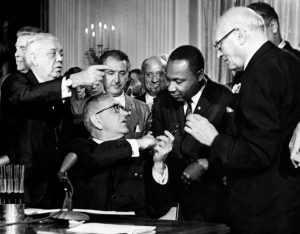
London Concours: The Enduring Allure of the V12
The London Concours is an automotive garden party in the heart of the city, gathering together nearly 100 motoring icons, old and new, in one of London’s most beautiful historic hidden venues, the HAC (Honourable Artillery Company) estate. The cars sit at the apex of an event brimming with fine champagne and world-class gastronomy, enjoyed with a live music soundtrack and surrounded by pop-up boutiques from sought-after luxury brands. Held across three days, the London Concours opens up the world of top-end craftsmanship in automotive and beyond, with live panel discussions, awards ceremonies and roving comperes, shining a spotlight on the passion and the heritage of the brands and vehicles on display. It is truly a wonderful event for anyone with a passion for cars.
In 2024 the London Concours had nine concours classes, namely Great British Racing, The Legendary V12, The Hypercars, Carnaby Street, Coachbuilt Greats – Zagato, Purple Reign, Corvette – A Design Icon, Areo – Front Enlightened and Wild Cards
Here we look at the Concours Class: The Legendary V12
A symbol of both engineering excess and precision; unashamedly loud and unflinchingly powerful, the V12 engine has been the beating heart of some of the greatest and most famous cars to grace our roads. With fewer of these iconic engines being produced, the London Concours 2024 class, Legendary V12 class celebrates the finest cars to be powered by the inimitable engine.
At the centre of the V12 display is the priceless, one-off, Jaguar XJ13 prototype. Designed by lead Jaguar engineer William Heynes, the XJ13 was conceived to take the fight to Ferrari and the other established names at Le Mans in the mid 1960s. It was advanced in terms of its construction, a true featherweight, tipping the scales at just under 1000kg, despite having a substantial, 5.0-litre V12 mounted behind the driver. The stunning motor – which, innovatively, was incorporated into the chassis as a stressed member – produced 502bhp at a heady 7600rpm, driving the rear wheels through a five-speed manual ZF ‘box. Unfortunately, by the time the prototype had been completed in 1966, Jaguar was in the midst of merging with BMC, and top-level racing had fallen down the management team’s agenda. As a result, the ground-breaking XJ13 sadly never raced. It remains a mesmerising thing, offering a tantalising glimpse of what might have been for Jaguar.
Also on show was another unique machine that takes the concept of a V12 engined road car to its absolute extreme: a certain 27-litre V12 Rolls-Royce. It is, of course, John Dodd’s legendary ‘The Beast’ – dubbed the ‘Super Rolls’ by the BBC. With a Rolls-Royce Merlin engine under that long bonnet, it was rumoured to pack between 750 and 1000bhp, and was listed in the Guinness Book of World Records the “the world’s most powerful car” in 1977. Dodd was known to have extensively exercised ‘The Beast’ on Germany’s Autobahns in period, presumably surprising a few drivers of potent BMWs and Mercedes in the process. The RAC recorded it hitting 183mph in the hands of a very brave test driver, although it was believed that it was a true 200mph car. Another wonderful, thunderous, expression of British engineering ingenuity.
The wild Lamborghini Diablo was also in attendance, bringing a dash of ‘90s excess to proceedings. For a generation of car enthusiasts who came of age in the ‘90s – remains the ultimate poster supercar. Introduced in 1990 as a successor to the Countach, the Diablo featured a more futuristic design – low, wide and outrageous – penned again by master designer, Marcello Gandini. The Diablo featured a mid-mounted V12, initially a dual overhead cam 5.7-litre unit with four valves per-cylinder. It put out 485bhp and was good for 202mph flat out – very brisk for 1990. The Diablo remained in production until 2001, tamed only slightly following Audi’s takeover of the company. A V12 Sant’Agata icon that acts as a bridge between the fearsome old-school Lamborghinis, and the brand’s marginally saner, 21st century creations.
A British V12 supercar created for the new millennium was also on show: the wonderful Ian Callum designed Vanquish. Introduced in 2001, it perfectly combined the graceful elegance and style of a traditional grand tourer with thoroughly modern V12 muscle. It featured a sonorous 460bhp 6.0-litre V12 in standard form and up to 510bhp in the evolved Vanquish S that would come later. It provided one of the best automotive soundtracks of the noughties – a baleful howl – and could propel the sleek coupe to over 190mph. The Vanquish was joined by its younger, more pugnacious sibling, the V12 Vantage. Arriving in 2009, it delivered what Aston enthusiasts had been calling for: a version of the beautifully handling Vantage, with added performance punch. It was wonderfully ‘over-engined’, with a 6.0-litre V12 crammed into the smaller Vantage body, driving through a six-speed manual box. With 510bhp – a useful gain of 90bhp over the slightly torque-light V8 model – the V12 would surge towards the horizon with a relentless ferocity. A special, brilliantly analogue Aston, and a car that clearly illustrates just how transformative a V12 engine can be.
The cars on show:
1972 The Beast
1979 Ferrari 512 BB
1989 Ferrari Testarossa
1997 Lamborghini Diablo SV
1999 Ferrari F50
2005 Aston Martin Vanquish S
2009 Mercedes-Benz SL65 AMG Black Series
2017 Aston Martin V12 Vantage S
I hope you liked our article. What is your favourite car here?
The post London Concours: The Enduring Allure of the V12 appeared first on My Car Heaven.

